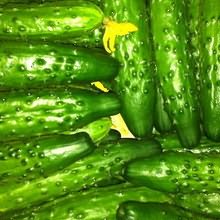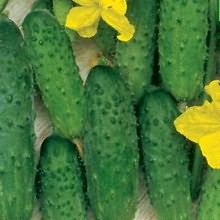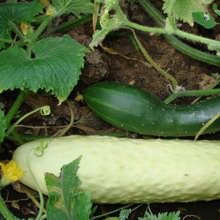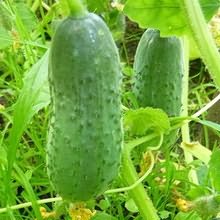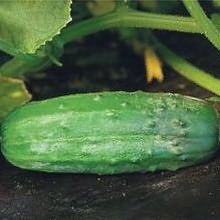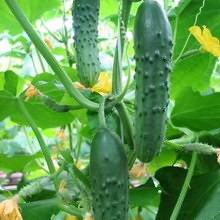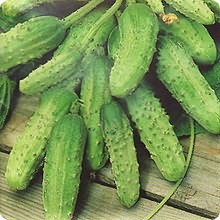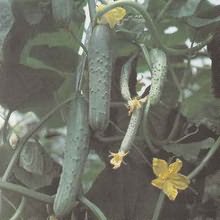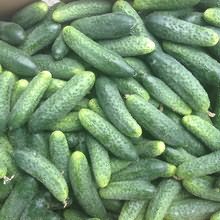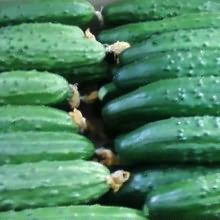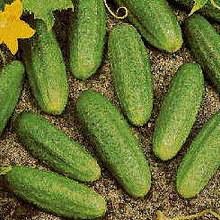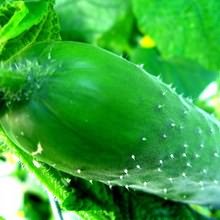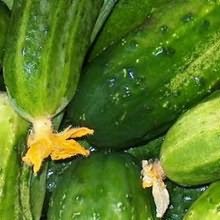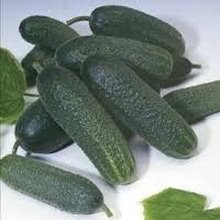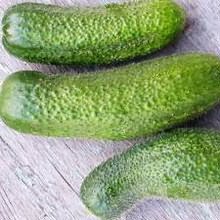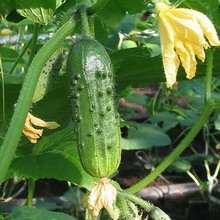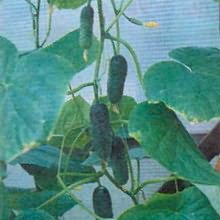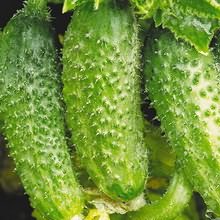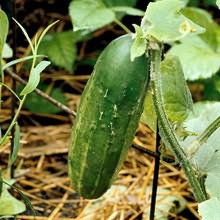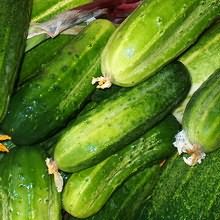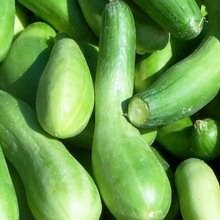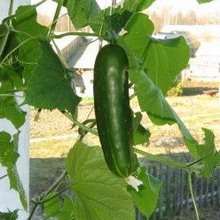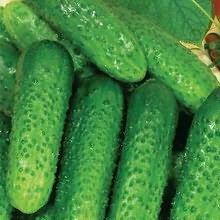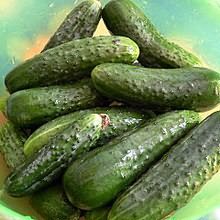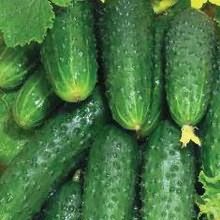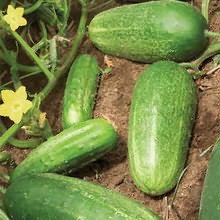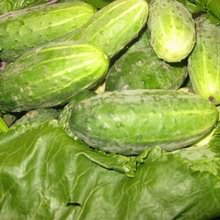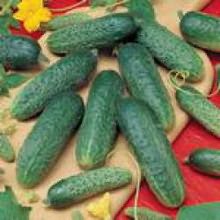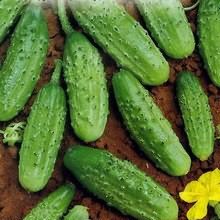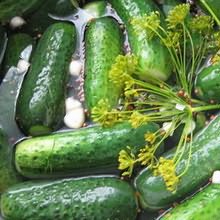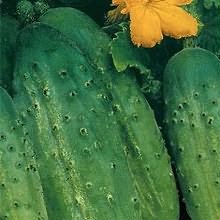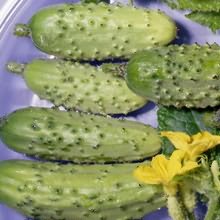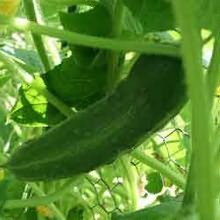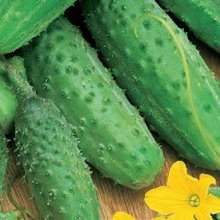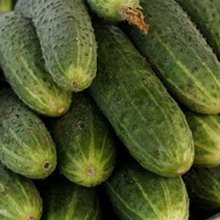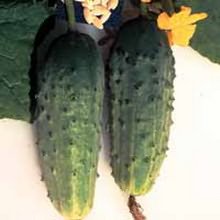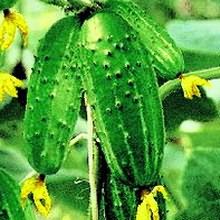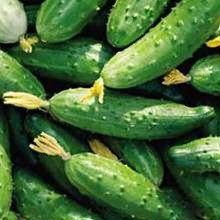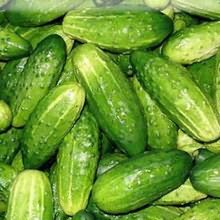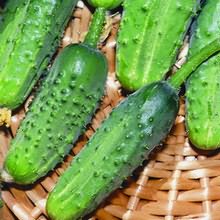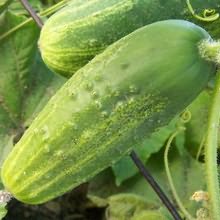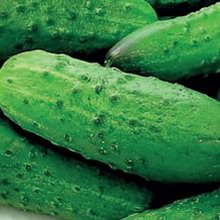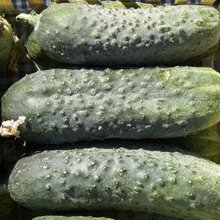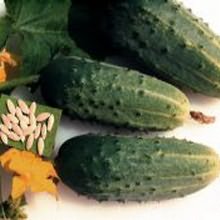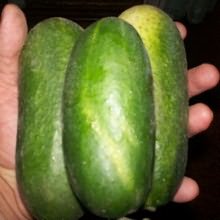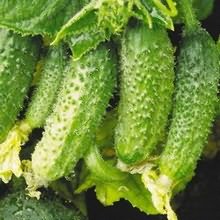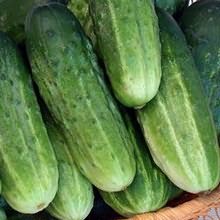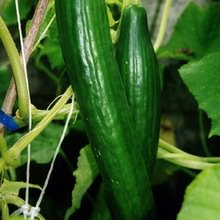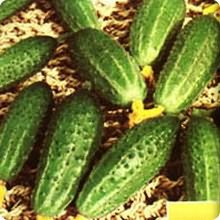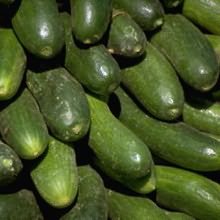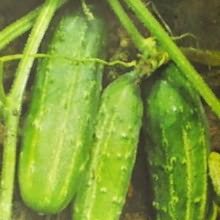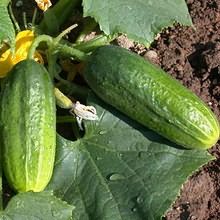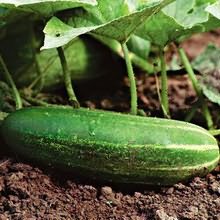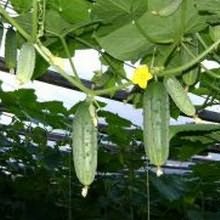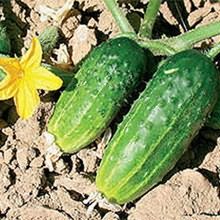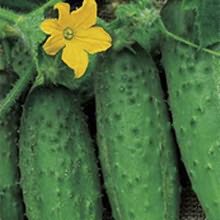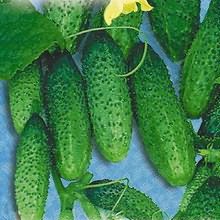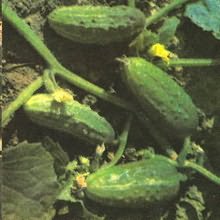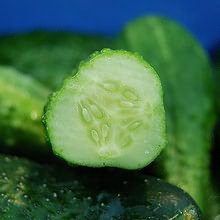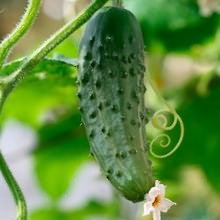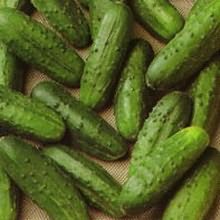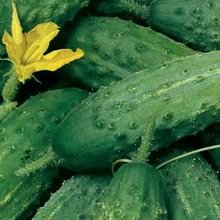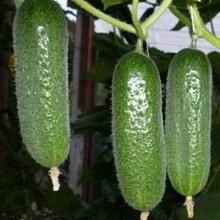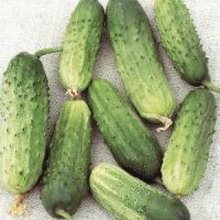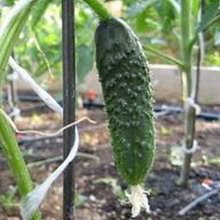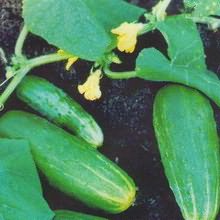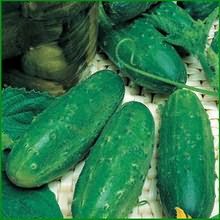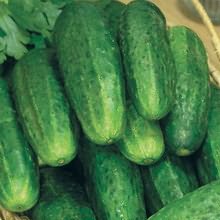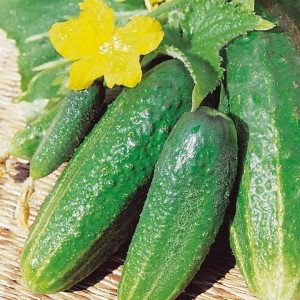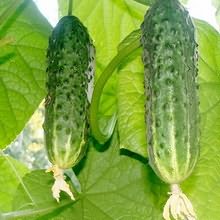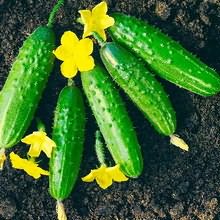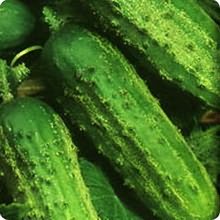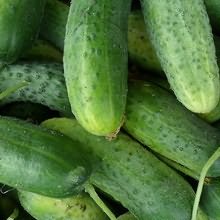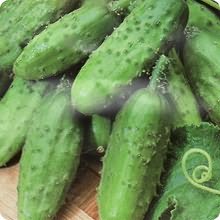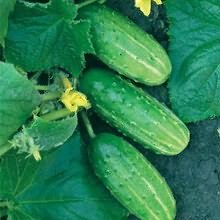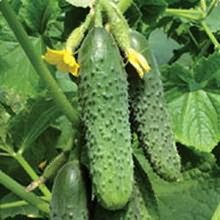It would seem that there is nothing complicated in growing cucumbers. And this is true, but only if you approach the matter with a certain amount of knowledge. Including about the varieties that are best suited for growing in your area.
How to generally navigate the abundance of cucumber varieties and choose the right ones is described in detail and consistently in the article Choosing Cucumber Varieties. Let me briefly recap the main points.
First of all, you need to answer yourself 3 questions:
- Where do you intend to grow cucumbers: in a greenhouse, greenhouse, open field, or even on a windowsill?
- When do you want to harvest: early June, July or August?
- How long do you want to get cucumber harvests?
So, early varieties of cucumbers are more susceptible to disease, and their fruiting period, in comparison with later ones, is much shorter. And, despite the fact that the division of cucumbers into early, medium and late is somewhat arbitrary, it is from the answers to these 3 questions, for obvious reasons, that the choice of variety will depend.
Only properly selected varieties are not so scary disease, which cucumbers are most often affected in the conditions of the middle lane: powdery mildew, downy mildew and bacteriosis, therefore, when choosing a variety, you should pay attention Special attention their resistance to these diseases.
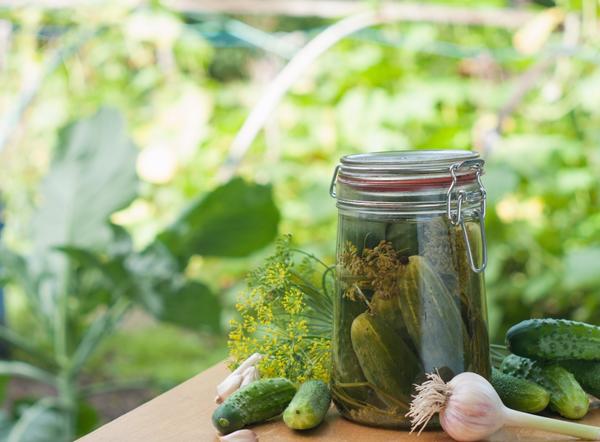
One more question: what exactly do you need cucumbers for - eating fresh or pickling? Their varieties according to their purpose are conditionally divided into 3 groups: pickling, salad, universal. Naturally, each of the varieties has its own advantages, but everyone should choose the best one for himself, depending on his needs and desires. For example, I always plant half of pickling varieties, and 25% of salad and universal varieties each.
By the way, we already talked about the secrets of growing cucumbers in this article, and it can also be useful when choosing varieties. Well, having finished with the theory, we will move on to descriptions of the most popular cucumber varieties for greenhouses in the conditions of the Middle Strip, open ground, shady areas and a home garden.
The best varieties of cucumbers for greenhouses and greenhouses
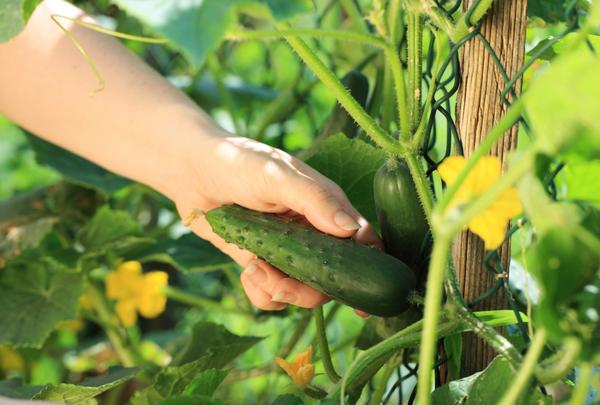
Goosebump F1
An early (from 42 to 45 days after sowing) parthenocarpic (that is, self-fertile, not requiring pollination) high-yielding hybrid produced by the Gavrish agricultural company (our review tells more about this and other seed producers). Plant of bunch type of blossoming, srednerosly; growth of lateral shoots is limited. The fruits are large-tuberous with small black spikes, reaching up to 8–12 cm long; they are genetically devoid of bitterness. The variety is distinguished by high taste qualities, versatility: it is good both fresh and for pickling. Very resistant to powdery mildew and downy mildew; suitable for growing in greenhouses, greenhouses, as well as in open ground.
Thumb boy
Early maturing (bearing fruit already on the 39th day) variety with a female type of flowering, characterized by resistance to a complex of diseases. Zelentsy, growing in length no more than 11 cm with a mass of 50 - 65 g, lovers of gherkins will appreciate it. The fruits are excellent for canning and pickling.
Benefit F1
Early maturing (from 43-50 days from germination to fruiting) self-pollinating hybrid of the female type of flowering. Zelenets weighing up to 100-120 grams and 10-12 cm long is densely covered with small tubercles. The fruits are devoid of bitterness and are distinguished by high palatability, universal (salting, pickling, fresh consumption). The hybrid is very resistant to powdery mildew, downy mildew and root rot.
Alekseich F1
Early ripe (from germination to fruiting 37-43 days) parthenocarpic hybrid of the female type of flowering. The plant is medium-sized, the variety is universal, the fruits are slightly tuberous, weighing 60-80 g and 7-8 cm long, Zelentsy have high taste qualities. The hybrid is extremely resistant to powdery mildew as well as downy mildew.
Emelya F1
A universal early ripe parthenocarpic hybrid, the fruits of which are successfully used both fresh and for pickling. It grows and develops better in heated greenhouses. The fruits ripen quickly - in 40-45 days. The bush of the variety is indeterminate (has unlimited growth of lashes), with a predominantly female type of flowering and a bunch of ovaries.
The best varieties of cucumbers for open ground
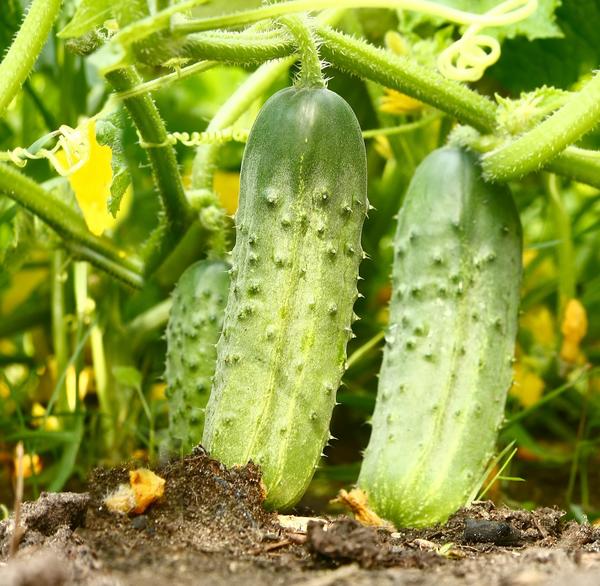
April F1
An early ripe universal hybrid, the fruiting of which occurs 45-55 days after germination. It can be successfully grown not only in open ground, but also in small balcony boxes - the plant is compact and capable of self-regulation of branching. Cylindrical fruits are quite large: with a weight of 200-250 g in length, they reach 22-25 cm ... Undeniable advantages of the variety: no bitterness, undemanding care and relative cold resistance, which makes it possible to obtain good yields in open ground.
Erofei
Bee-pollinated mid-season universal (suitable both for fresh consumption and for canning) variety. Plant mixed type flowering, strongly branched and vigorous. Zelenets is short (about 6-7 cm), elongated-ovoid, slightly tuberculate. The variety is quite resistant to downy mildew.
Ant F1
Parthenocarpic ultra-early (35 - 39 days) hybrid. The plant is medium climbing, beam type of flowering with limited branching of lateral shoots. The fruits are large-tuberous, cylindrical, up to 12 cm long. The variety is resistant to olive blotch, as well as downy and powdery mildew.
Masha F1
Parthenocarpic ultra-early (35 - 39 days), high-yielding hybrid of the beam type of flowering with a long fruiting period. Fruits - large-tuberous gherkins of the correct cylindrical shape - are genetically devoid of bitterness, have the highest taste qualities and are suitable not only for fresh consumption, but also for canning. The variety is resistant to a complex of diseases: powdery and downy mildew, cucumber mosaic virus and others, as well as to unfavorable growing conditions.
Competitor
Productive, early (43-53 days) pickling variety with good taste. Fruits are elongated-oval or cylindrical, up to 12 cm long, completely covered with large tubercles, reaching a weight of 120 g. The variety is resistant to powdery mildew and bacterial spotting.
Fontanelle F1
Mid-season (from 48 to 55 days) bee-pollinated hybrid, resistant to a complex of diseases. Cylindrical fruits, covered with small tubercles with rare thorns, are devoid of bitterness; used for pickling and canning. The length of ripe greens reaches 12 cm, and the mass does not exceed 100 grams.
As the practice of our gardeners has shown, such varieties of cucumbers as Far Eastern And Phoenix, read more about the experience of growing which you can here in this post.
The best varieties of cucumbers for shady areas
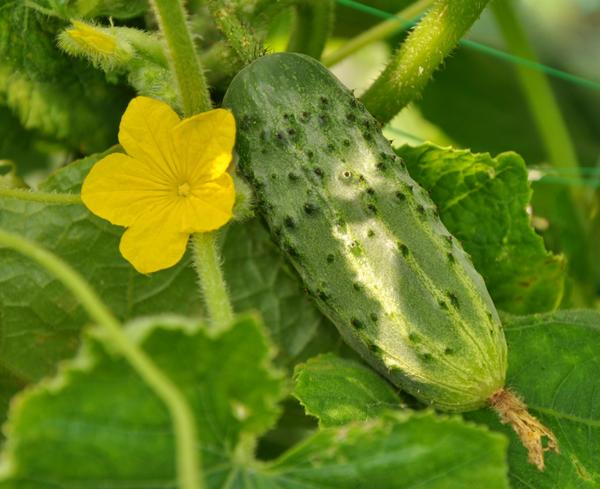
Agree, the summer cottage is far from being equally illuminated by the sun from all sides, to which many garden crops are very demanding, and its area is not infinite. Tomatoes, peppers, eggplants - they all grow well only in open sunny areas, and sometimes there is simply no room left for planting cucumbers. But not everything is so hopeless, and if there is no longer an open sunny place on your site, it does not matter - feel free to plant cucumbers in partial shade, because there are varieties that grow well in such conditions.
Muromsky 36
Early ripening (35-45 days) pickling variety, small-tuberculate or smooth fruits of which reach 6-8 cm in length. Relatively resistant to short-term temperature drops. The fruits are light green, have an ovoid or ellipsoid shape, and reach a length of 6-10 cm. The peculiarity of the variety is that its fruits turn yellow rather quickly, so they need to be collected often.
Secret of F1
Parthenocarpic early ripe (38-42 days) hybrid of universal purpose. The plant is medium-branched, with a female type of flowering. Zelenets is cylindrical, slightly ribbed, medium in size, weighing up to 115 g. The variety is resistant to powdery mildew, cladosporiosis.
Moscow evenings F1
Parthenocarpic mid-season (42-45 days) hybrid, the fruits of which have excellent taste and are suitable for both pickling and fresh consumption. The plant is predominantly with a female type of flowering, strongly climbing. The fruit is cylindrical, tuberculate, dark green in color with white pubescence. Its length reaches 14 cm, and its weight does not exceed 110 grams. The variety is resistant to cucumber mosaic virus, powdery mildew, cladosporiosis.
The best varieties of cucumbers for balconies and home gardens
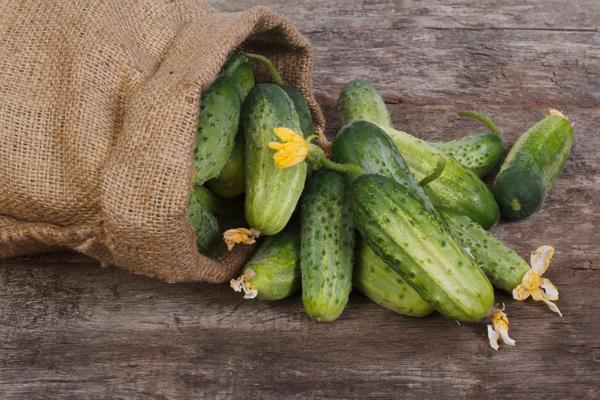
If you don’t have the opportunity to grow cucumbers in the garden, you can arrange a cucumber “bed” on the balcony, loggia and just on the window, the main thing is to choose the right variety.
Machaon F1
Early maturing parthenocarpic gherkin hybrid with a predominantly female type of flowering. Zelentsy spindle-shaped, small (up to 11 cm long), weighing 60-110 g, are distinguished by high taste and pickling qualities. The variety is resistant to cucumber mosaic, olive blotch, powdery mildew.
The following varieties of cucumbers are also great for growing on the balcony and in the home garden: Balcony F1, Hummingbird F1, Moscow greenhouse, Biryusa, Nezhinsky local And Elegant.
The list of cucumber varieties and hybrids for the middle lane could go on and on - it is likely that I did not mention the varieties loved by many gardeners. Therefore, I ask you to supplement me - please tell us in the comments to the article about your favorite varieties, why do you prefer them?
It would seem that there is nothing complicated in growing cucumbers. And this is true, but only if you approach the matter with a certain amount of knowledge. Including about the varieties that are best suited for growing in your area.
Cucumber variety matters!
First of all, you need to answer yourself 3 questions:
Where do you intend to grow cucumbers: in a greenhouse, greenhouse, open field, or even on a windowsill?
When do you want to harvest: early June, July or August?
How long do you want to get cucumber harvests?
So, early varieties of cucumbers are more susceptible to disease, and their fruiting period, in comparison with later ones, is much shorter. And, despite the fact that the division of cucumbers into early, medium and late is somewhat arbitrary, it is from the answers to these 3 questions, for obvious reasons, that the choice of variety will depend.
Only properly selected varieties are not so afraid of the diseases that most often affect cucumbers in the middle zone: true powdery mildew, downy mildew and bacteriosis, so when choosing a variety, you should pay special attention to their resistance to these diseases.
Not every variety of cucumbers is suitable for pickling!
One more question: what exactly do you need cucumbers for - eating fresh or pickling? Their varieties according to their purpose are conditionally divided into 3 groups: pickling, salad, universal. Naturally, each of the varieties has its own advantages, but everyone should choose the best one for himself, depending on his needs and desires. For example, I always plant half of pickling varieties, and 25% of salad and universal varieties each.
Having finished with the theory, let's move on to the descriptions of the most popular cucumber varieties for greenhouses, open ground, shady areas and home gardens in the conditions of the Middle Band.
The best varieties of cucumbers for greenhouses and greenhouses
Parthenocarpic varieties and hybrids are preferred for greenhouses
Goosebump F1
An early (from 42 to 45 days after sowing) parthenocarpic (that is, self-fertile, not requiring pollination) high-yielding hybrid produced by the Gavrish agricultural company (our review tells more about this and other seed producers). Plant of bunch type of blossoming, srednerosly; growth of lateral shoots is limited. The fruits are large-tuberous with small black spikes, reaching up to 8–12 cm long; they are genetically devoid of bitterness. The variety is distinguished by high taste qualities, versatility: it is good both fresh and for pickling. Very resistant to powdery mildew and downy mildew; suitable for growing in greenhouses, greenhouses, as well as in open ground.
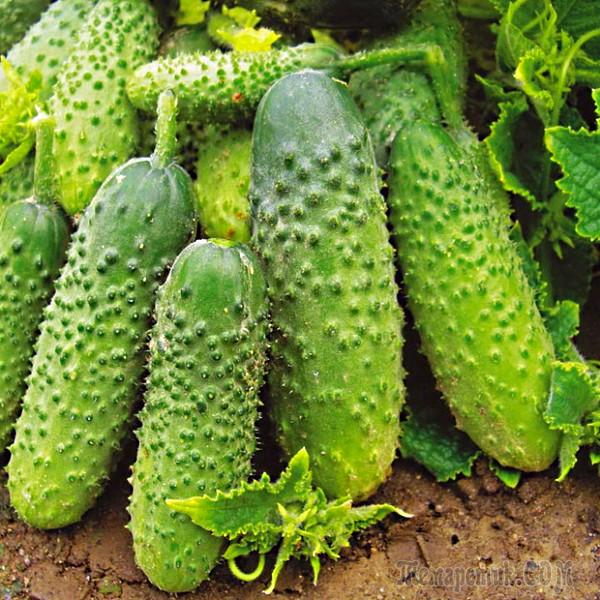
Thumb boy
Early maturing (bearing fruit already on the 39th day) variety with a female type of flowering, characterized by resistance to a complex of diseases. Zelentsy, growing in length no more than 11 cm with a mass of 50 - 65 g, lovers of gherkins will appreciate it. The fruits are excellent for canning and pickling.
Benefit F1
Early maturing (from 43-50 days from germination to fruiting) self-pollinating hybrid of the female type of flowering. Zelenets weighing up to 100-120 grams and 10-12 cm long is densely covered with small tubercles. The fruits are devoid of bitterness and are distinguished by high palatability, universal (salting, pickling, fresh consumption). The hybrid is very resistant to powdery mildew, downy mildew and root rot.
Alekseich F1
Early ripe (from germination to fruiting 37-43 days) parthenocarpic hybrid of the female type of flowering. The plant is medium-sized, the variety is universal, the fruits are slightly tuberous, weighing 60-80 g and 7-8 cm long, Zelentsy have high taste qualities. The hybrid is extremely resistant to powdery mildew as well as downy mildew.
Emelya F1
A universal early ripe parthenocarpic hybrid, the fruits of which are successfully used both fresh and for pickling. It grows and develops better in heated greenhouses. The fruits ripen quickly - in 40-45 days. The bush of the variety is indeterminate (has unlimited growth of lashes), with a predominantly female type of flowering and a bunch of ovaries.
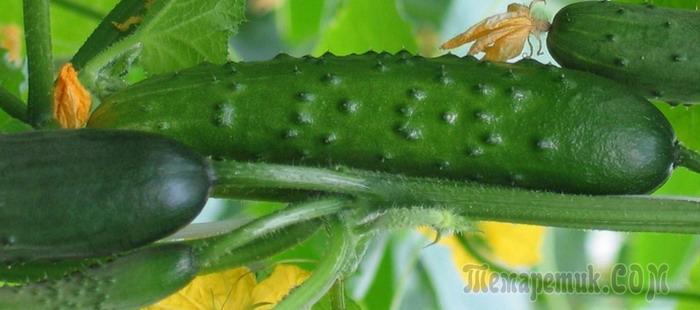
The best varieties of cucumbers for open ground
Varieties for open ground are selected especially carefully
April F1
An early ripe universal hybrid, the fruiting of which occurs 45-55 days after germination. It can be successfully grown not only in open ground, but also in small balcony boxes - the plant is compact and capable of self-regulation of branching. Cylindrical fruits are quite large: with a weight of 200-250 g in length, they reach 22-25 cm ... Undeniable advantages of the variety: no bitterness, undemanding care and relative cold resistance, which makes it possible to obtain good yields in open ground.
Erofei
Bee-pollinated mid-season universal (suitable both for fresh consumption and for canning) variety. A plant of mixed type of flowering, strongly branched and vigorous. Zelenets is short (about 6-7 cm), elongated-ovoid, slightly tuberculate. The variety is quite resistant to downy mildew.
Ant F1
Parthenocarpic ultra-early (35 - 39 days) hybrid. The plant is medium climbing, beam type of flowering with limited branching of lateral shoots. The fruits are large-tuberous, cylindrical, up to 12 cm long. The variety is resistant to olive blotch, as well as downy and powdery mildew.
Masha F1
Parthenocarpic ultra-early (35 - 39 days), high-yielding hybrid of the beam type of flowering with a long fruiting period. Fruits - large-tuberous gherkins of the correct cylindrical shape - are genetically devoid of bitterness, have the highest taste qualities and are suitable not only for fresh consumption, but also for canning. The variety is resistant to a complex of diseases: powdery and downy mildew, cucumber mosaic virus and others, as well as to unfavorable growing conditions.
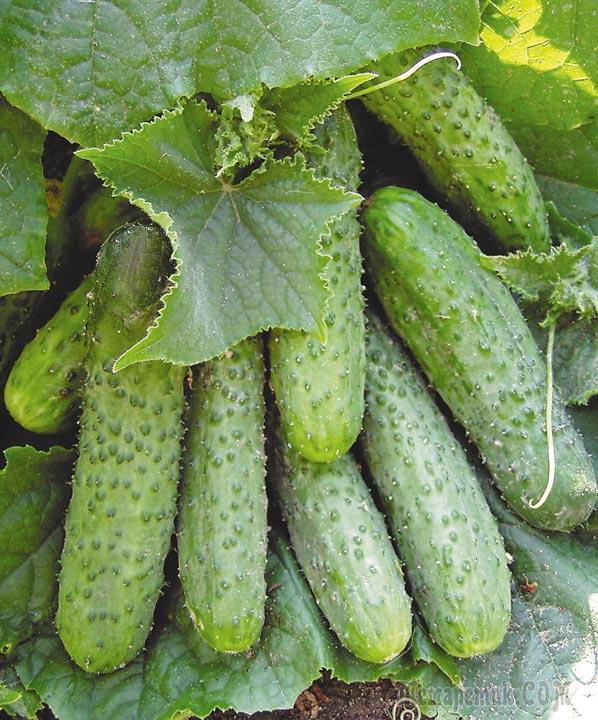
Competitor
Productive, early (43-53 days) pickling variety with good taste. Fruits are elongated-oval or cylindrical, up to 12 cm long, completely covered with large tubercles, reaching a weight of 120 g. The variety is resistant to powdery mildew and bacterial spotting.
Fontanelle F1
Mid-season (from 48 to 55 days) bee-pollinated hybrid, resistant to a complex of diseases. Cylindrical fruits, covered with small tubercles with rare thorns, are devoid of bitterness; used for pickling and canning. The length of ripe greens reaches 12 cm, and the mass does not exceed 100 grams.
As the practice of our gardeners has shown, such varieties of cucumbers as the Far East and Phoenix have proven themselves to be excellent for growing in open ground.
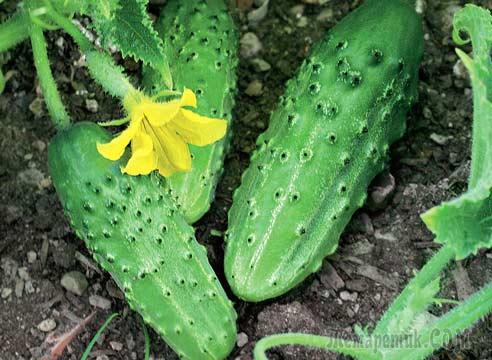
The best varieties of cucumbers for shady areas
There are varieties of cucumbers that can grow even in partial shade.
Agree, the summer cottage is far from being equally illuminated by the sun from all sides, to which many garden crops are very demanding, and its area is not infinite. Tomatoes, peppers, eggplants - they all grow well only in open sunny areas, and sometimes there is simply no room left for planting cucumbers. But not everything is so hopeless, and if there is no longer an open sunny place on your site, it does not matter - feel free to plant cucumbers in partial shade, because there are varieties that grow well in such conditions.
Muromsky 36
Early ripening (35-45 days) pickling variety, small-tuberculate or smooth fruits of which reach 6-8 cm in length. Relatively resistant to short-term temperature drops. The fruits are light green, have an ovoid or ellipsoid shape, and reach a length of 6-10 cm. The peculiarity of the variety is that its fruits turn yellow rather quickly, so they need to be collected often.
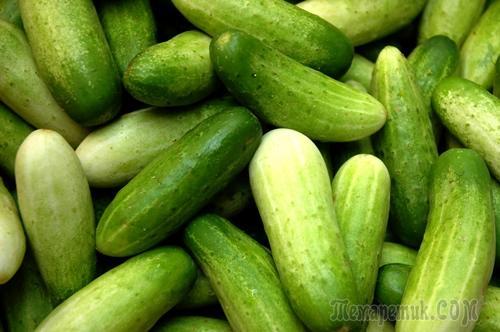
Secret of F1
Parthenocarpic early ripe (38-42 days) hybrid of universal purpose. The plant is medium-branched, with a female type of flowering. Zelenets is cylindrical, slightly ribbed, medium in size, weighing up to 115 g. The variety is resistant to powdery mildew, cladosporiosis.
Moscow evenings F1
Parthenocarpic mid-season (42-45 days) hybrid, the fruits of which have excellent taste and are suitable for both pickling and fresh consumption. The plant is predominantly with a female type of flowering, strongly climbing. The fruit is cylindrical, tuberculate, dark green in color with white pubescence. Its length reaches 14 cm, and its weight does not exceed 110 grams. The variety is resistant to cucumber mosaic virus, powdery mildew, cladosporiosis.
The best varieties of cucumbers for balconies and home gardens
Even on the balcony you can harvest a good harvest
If you don’t have the opportunity to grow cucumbers in the garden, you can arrange a cucumber “bed” on the balcony, loggia and just on the window, the main thing is to choose the right variety.
Machaon F1
Early maturing parthenocarpic gherkin hybrid with a predominantly female type of flowering. Zelentsy spindle-shaped, small (up to 11 cm long), weighing 60-110 g, are distinguished by high taste and pickling qualities. The variety is resistant to cucumber mosaic, olive blotch, powdery mildew.
The following varieties of cucumbers are also excellent for growing on the balcony and in the home garden: Balcony F1, Hummingbird F1, Moscow greenhouse, Biryusa, Nezhinsky local and Graceful.
The list of cucumber varieties and hybrids for the middle lane could go on and on - it is likely that I did not mention the varieties loved by many gardeners.
Hello dear friends!
I will start the article with a question from my reader O. Filina:
“Under the conditions of the middle zone, cucumbers are susceptible to a number of certain diseases, in which we fail to get a full and high-quality crop. Tell me, what hybrids and varieties of cucumbers for the middle lane are best planted?
“What diseases in the middle zone are most affected by cucumbers?”
Most often, cucumbers are affected by downy mildew (see article), powdery mildew (see article), bacteriosis (see article), ascochitosis.
"What contributes to the development of these diseases?"
The development of these diseases is facilitated by certain weather conditions in our area.
“What varieties of cucumbers, in this case, would you advise planting?”
Many varieties can be recommended that will be resistant to this kind of disease. For example, these are varieties such as Stork, Phoenix, Lotus, Salting, Abundant, Unity and Whale. These varieties are recommended by experimental stations in other regions, but you can safely plant them in your backyard. In the middle lane and the middle Volga region, they have proven themselves well.
"Tell me more about the benefits of each variety."
For example,
- The Phoenix variety of the Crimean experimental station has a complex high resistance to diseases that affect cucumber in our conditions, but it should be borne in mind that this variety belongs to late-ripening varieties. In addition, this variety is recommended for late (June) plantings and the main collection of fruits of this variety begins when most varieties no longer bear fruit.
- Variety Lotus (Far Eastern Research Institute of Agriculture) is resistant to downy mildew, also mid-season, but the Kit variety is resistant to bacteriosis.
- The Volgograd Experimental Station offers the varieties Zasolochny and Abundant as varieties of cucumbers for the middle zone.
- Variety Unity of the All-Russian Research Institute of Selection and Seed Production of Vegetable Crops is distinguished not only by resistance to diseases, but also by a stable yield.
"What are these hybrids good for?"
- The F1 hybrid is distinguished by its friendly return of an early harvest, and is also resistant to powdery present, powdery downy mildew and the cucumber mosaic virus.
- Crane F1 - a very well-known hybrid, resistant to downy and powdery mildew. This hybrid grows well in our conditions and is to the taste of many gardeners, not only in fresh, but also in salted form.
- Hybrids Claudia F1, and Farmer F1 have complex disease resistance, and Claudia also has high taste qualities.
- The last hybrid that can be recommended for growing in the middle lane and the middle Volga region is the Semcross F1 hybrid. It is resistant to true as well as to downy mildew and to the causative agent of cucumber mosaic.
Of course, I have not told about all the suitable ones here. varieties of cucumbers for the middle lane and the middle Volga region, as there are very, very many of them. But these are tested by me in the beds!
See you soon, dear friends!
ayatskov1.ru
The best and early varieties of cucumbers for greenhouses: photos and characteristics
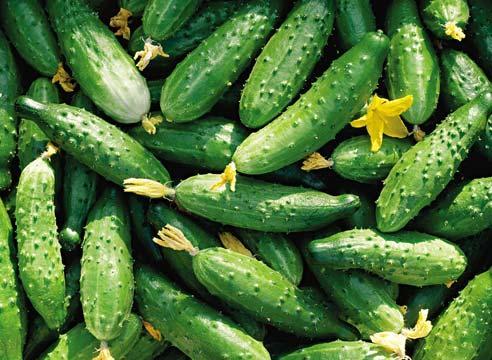
Cucumbers in our country have always been held in high esteem. These vegetables are grown by almost all gardeners. But what kind of greens to plant, it depends on personal preferences. The fruits can be suitable both for fresh consumption immediately after harvest, and for cultivation for subsequent pickling. Grow outdoors or indoors. And also have a different aging period.
Varieties of cucumbers for growing in greenhouses: photos and descriptions
There are several dozen varieties of cucumbers for greenhouses. In addition, a large number of hybrids were bred.
Productive is Hybrid Hercules F1. Spindle-shaped fruits weighing 152 - 170 g. It is considered late-ripening. From the moment of emergence of seedlings to the moment of the appearance of fruits, 62 days pass. The type of flowering is mixed. The ovaries are laid in bunches. The only negative of Hercules F1 is that it needs pollination by bees. So in the greenhouse you will have to carry out artificial pollination by hand.
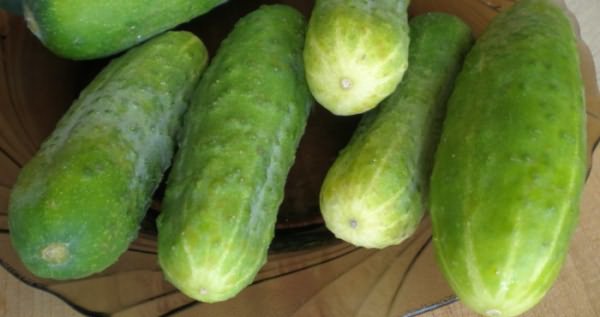
Hybrid Emelya F1- can be both pickling and salad. It was bred for growing under film. Ripens very quickly - in 39 - 43 days. The bush has an unlimited number of lashes and does not need pollination. The yield is high. The fruits reach 13-15 cm. The weight of each of them is 120 - 150 g. It grows very well in heated greenhouses.
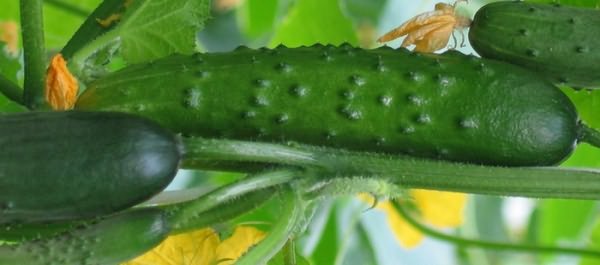
Annushka F1. Bee pollinated. Mid-season. The type of flowering is predominantly female. Leaves are medium sized and green in color. Cylindrical fruits with short stripes. Their length is 10 - 12 cm. Weight 95 - 110 g. Ribbed and tuberculate. Tubercles of medium size. Valued for disease resistance and consistent yield.
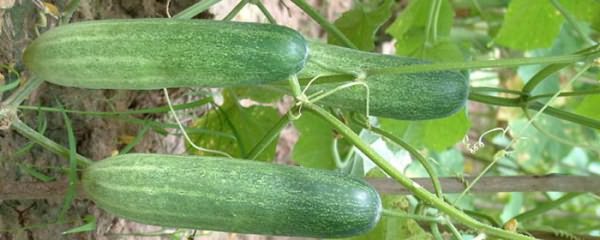
Hybrid is versatile Dynamite F1. Feels good under the film. Especially if you give him enough space. Zelentsy have a cylindrical shape, not wide, weighing 100 - 120 g and 12 - 14 cm long. It is convenient because it does not require pollination.
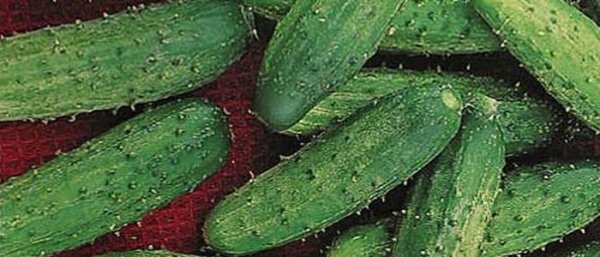
The following hybrids are also good in their qualities:
|
|
|
White Angel F1 |
|
|
Vicenta F1 |
|
|
Solar |
Crystal |
|
The best varieties of cucumbers for winter glazed greenhouses:
|
Relay race |
Home |
Moscow greenhouse |
|
Russian |
|
|
|
|
Surprise 66 |
marfinsky |
|
Rykovsky |
|
|
|
Spotreisting |
These varieties of cucumbers are capable of producing good yields and are unpretentious.
In order to be able to harvest an early harvest, it is necessary to use self-pollinated early varieties of cucumbers.
Among them:
Varieties of cucumbers for pickling
Salted cucumbers in tsarist times. And today, many still prefer to grow Zelentsy specifically for subsequent salting. Suitable varieties of cucumbers for pickling: Murom, Nezhensky, Voronezh, Vyazemsky. However, it should be borne in mind that plantings require regular spraying, as they are unstable to various diseases.
You can grow hybrids that have a thin skin. Then it will be easier for the brine to penetrate the fruit. In this case, you should pay attention to:
|
|
Vanguard |
|
|
Brigantine |
spring |
Asterix |
|
Competitor |
Pickling |
Far East 27 |
|
Fabulous |
Harvest 86 |
Business Aquarius |
|
Kharkov |
|
Faithful friends |
|
|
|
|
|
|
Salad varieties of cucumbers
If the fruit has a thick skin, then it is not suitable for pickling. But it's delicious fresh. Salad varieties of cucumbers are widely represented, as well as hybrids:
|
|
|
Altai early |
|
|
|
darling |
|
Unity |
Vladivostok 155 |
|
|
Squadron |
Pasamonte |
|
|
Rzhavsky local |
|
|
|
|
Moravian gherkin |
Irresistible 40 |
|
Ussuriysky 3 |
|
|
|
|
Serpentine |
|
|
|
|
|
|
Coastal |
|
|
|
|
Northern |
blessed |
|
|
Crane |
Regia squad |
You can consider them in detail if you look at the photo of cucumber varieties.
Dutch cucumber varieties
Domestic gardeners often choose Dutch varieties of cucumbers. Among them, there are several worthy of attention.
Pasadena F1. Parthenocarpic, mid-early. Short greens, cylindrical green or dark green without bitterness. Has good taste. The mass of each fruit is 66 - 92 g. It is valued for its stable yield. Zelentsy have a high marketability.
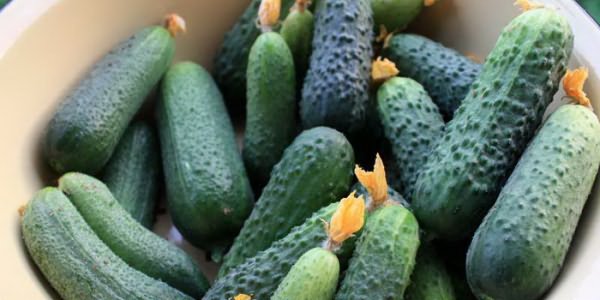
Santana F1. Valued for resistance to various diseases, for a stable yield and for a long period of fruiting. Fruits are medium in size, cylindrical without bitterness. Green or dark green in color and with longitudinal stripes. The weight of one fruit is 50 - 88g. On a par with Pasadena F1 is delicious both fresh and pickled. Bee-pollinated, mid-late.
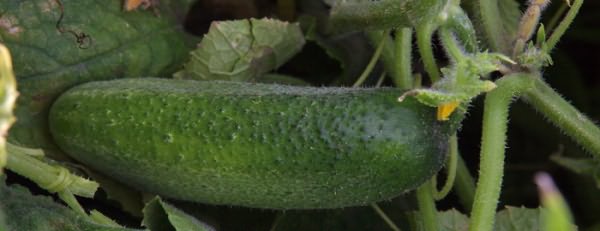
Ceres F1. Grown in winter greenhouses. Parthenocarpic. The fruiting period begins 40 days after emergence. Zelentsy have an elongated cylindrical shape. Dark green, medium ribbed, smooth. Weighing up to 300 g. Length up to 33 cm. They have good taste. Used to make salads.
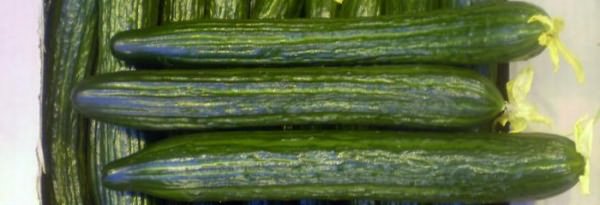
Cucumber variety Zozulya
Its fruits have good taste qualities. The length of the greens is up to 23 cm. The shape is cylindrical, the surface is slightly tuberculate. The base is smooth. In cross section, the zelenets is round-trihedral. The leaves are green in color, their shape is rounded-pentagonal, the size of the leaves is medium. Weaving is weak. Cylindrical ovary. Pubescence rare, complex, white.
Of the main advantages, early and friendly fruiting can be noted. It is best to grow in film greenhouses. From the moment of emergence of seedlings to the moment of fruiting, about 48 days pass. Parthenocarpic, but, nevertheless, it is advisable to pollinate in the first month of fruiting.
It should be borne in mind that the Zozulya cucumber variety is susceptible to white and root rot.
udec.ru
| chernoplodka.ru
Weather conditions in central Russia require careful selection of cucumber varieties. They must be resistant to diseases, intended for greenhouses and open ground, loyal to seedling cultivation.
Pickling varieties
A distinctive external feature of pickled cucumbers are black spikes and a compact size. Their peel is slightly thicker, and the flesh is denser than that of lettuce. This ensures that the cucumber does not soften during preservation and has a pleasant crunch during consumption. Zelenets of the pickling variety is salted gradually, without losing its crunch and aroma.
early ripe
Altai. Cold-resistant, high-yielding variety. The plant is bee-pollinated, with moderate formation of lashes, undemanding in care. Intense green oval-shaped fruits grow 10-12 cm long, great for canning. Zelenets is white-thorned, unlike black-thorned, it does not turn yellow for a long time. Ripening time - six weeks after germination. Murom. An ancient Russian variety. These are the best cucumber seeds for seedlings for central Russia, which are still preferred by experienced gardeners due to their excellent taste, abundant harvest and early maturity. The variety begins to bear fruit from the sixth week after emergence. Cucumbers are medium-sized, 6-8 cm long, medium-sized, oval-shaped, very tasty. The weight of the average greens is not more than 70 grams.
- The best cucumber seeds for seedlings for central Russia
Mid-season
Fontanelle F1. bee pollinated hybrid. Suitable for film shelters and open ground. In addition to the seedling method of cultivation, direct sowing of seeds into the ground is possible. Cucumbers are small, compact, with slight tubercles. The plant is tall, the whip reaches three meters. The weight of the fruit is about 100 grams, it grows no more than 10 cm in length. The first crop appears by the beginning of the eighth week after germination. Dragonfly F1. Beam arrangement of gherkin type cucumbers. The variety is high-yielding due to active branching. Each bundle contains up to 8 small fruits, 10 cm long. The variety is cold-resistant, bears fruit for a long time. The taste of greens is excellent.
late ripening
Nezhinsky. A bee-pollinated variety that has long won the affection of gardeners due to its excellent palatability in conservation, resistance to disease and temperature changes. Zelenets has large tubercles, grows up to 12 cm, weighing about 100 grams. Refers to very productive varieties.
The best cucumber seeds for seedlings for central Russia
Phoenix. Vigorous plant with long lashes and good branching. Begins to bear fruit 56-60 days after germination. Harvest - up to 5 kg of cucumbers from a bush. The latest variety, fruiting until frost. Cucumbers are large-tuberous, crispy, up to 15 cm in length. The weight of the average greens is about 150 grams. The variety tolerates high temperatures well. The only drawback of pickled cucumbers is that black-thorn varieties quickly turn yellow in the garden, therefore they require constant harvesting.
Salad varieties of cucumbers
In these varieties, the flesh is more tender, and the peel is smooth. When salted or seamed, they quickly lose their juice, which goes into brine, deforms, and becomes soft. But on the bushes they remain green much longer than pickling ones. Salad varieties of cucumbers have an early and middle periods maturation.
- The best cucumber seeds for seedlings for central Russia
early ripe
Cupid F1. The self-pollinating hybrid is popular for its high yield. A powerful, strong plant bears fruit already 40-45 days after germination. Zelenets is homogeneous, medium-sized, rich green, with a thin peel and excellent taste. Cucumbers do not turn yellow on the bushes for a long time, they are well stored and transported. Courage F1. Universal white-thorned variety, suitable for salads and preservation. Tuberculate dark green greens of medium size, up to 15-16 cm, about 130 grams. The variety is known for its strong root system, which ensures good growth and yield. The plant is able to throw out additional roots at the nodes of the main stem, which is often used by gardeners to strengthen the main root system and rejuvenate the bush. The variety does not tolerate shading.
Mid-season
Pickas F1. Self-pollinating hybrid, ideal for greenhouses and film shelters. Differs in high productivity. Long, up to 3.5 meters creepers yield up to 7 kg of cucumbers. The average dark green green grows up to 20 cm in length, has a weight of about 200 grams. Differs in high palatability. From germination to fruiting 50 days. Hercules F1. A vigorous bee-pollinated hybrid begins to bear fruit on the 60th day after germination. Zelentsy medium, about 15 cm, spindle-shaped, with a weak edge, dark green. Possesses the increased shade tolerance.
Sowing seeds for seedlings should be carried out in the second half of April. 20-25 day old plants are planted in open ground at the end of May, when the air and soil are warm enough.
They should have three well developed true leaves.
chernoplodka.ru
15 best varieties of cucumbers for the middle lane
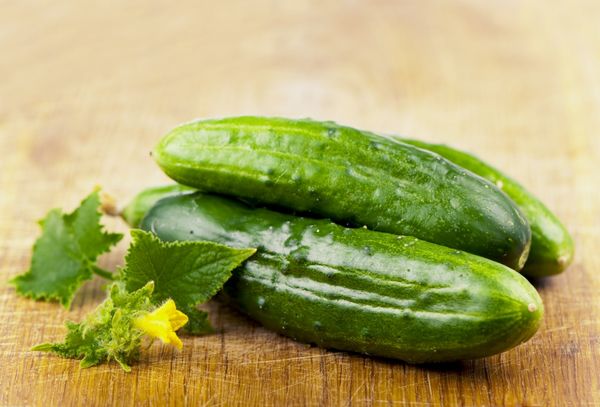
How to generally navigate the abundance of cucumber varieties and choose the right ones is described in detail and consistently in the article Choosing Cucumber Varieties. Let me briefly recap the main points.
First of all, you need to answer yourself 3 questions:
- Where do you intend to grow cucumbers: in a greenhouse, greenhouse, open field, or even on a windowsill?
- When do you want to harvest: early June, July or August?
- How long do you want to get cucumber harvests?
So, early varieties of cucumbers are more susceptible to disease, and their fruiting period, in comparison with later ones, is much shorter. And, despite the fact that the division of cucumbers into early, medium and late is somewhat arbitrary, it is from the answers to these 3 questions, for obvious reasons, that the choice of variety will depend.
Only properly selected varieties are not so scary disease, which cucumbers are most often affected in the conditions of the middle zone: powdery mildew, downy mildew and bacteriosis, therefore, when choosing a variety, you should pay special attention to their resistance to these diseases.
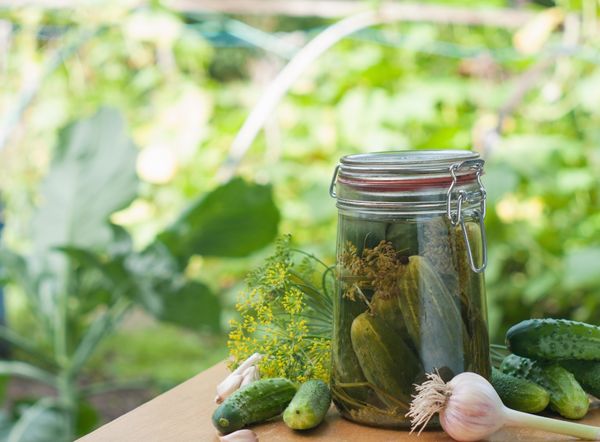
Another question: what exactly do you need cucumbers for - eating fresh or pickling? Their varieties according to their purpose are conditionally divided into 3 groups: pickling, salad, universal. Naturally, each of the varieties has its own advantages, but everyone should choose the best one for himself, depending on his needs and desires. For example, I always plant half of pickling varieties, and 25% of salad and universal varieties each.
By the way, we already talked about the secrets of growing cucumbers in this article, and it can also be useful when choosing varieties. Well, having finished with the theory, we will move on to descriptions of the most popular cucumber varieties for greenhouses, open ground, shady areas and home gardens in the conditions of the Middle Belt.
The best varieties of cucumbers for greenhouses and greenhouses
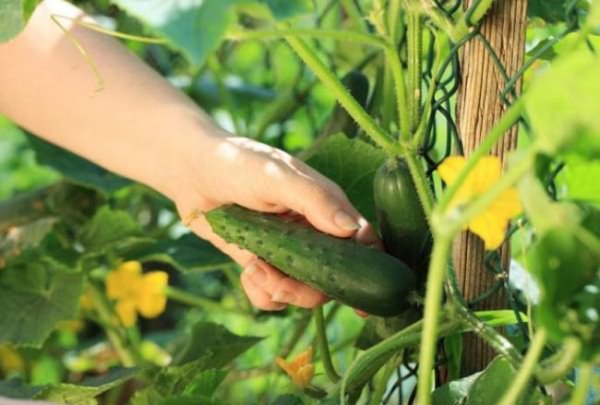
Goosebump F1
An early (from 42 to 45 days after sowing) parthenocarpic (that is, self-fertile, not requiring pollination) high-yielding hybrid produced by the Gavrish agricultural company (our review tells more about this and other seed producers). Plant of bunch type of blossoming, srednerosly; growth of lateral shoots is limited. The fruits are large-tuberous with small black spikes, reaching up to 8-12 cm long; they are genetically devoid of bitterness. The variety is distinguished by high taste qualities, versatility: it is good both fresh and for pickling. Very resistant to powdery mildew and downy mildew; suitable for growing in greenhouses, greenhouses, as well as in open ground.
Thumb boy
Early maturing (bearing fruit already on the 39th day) variety with a female type of flowering, characterized by resistance to a complex of diseases. Zelentsy, growing in length no more than 11 cm with a mass of 50 - 65 g, lovers of gherkins will appreciate it. The fruits are excellent for canning and pickling.
Benefit F1
Early maturing (from 43-50 days from germination to fruiting) self-pollinating hybrid of the female type of flowering. Zelenets weighing up to 100-120 grams and 10-12 cm long is densely covered with small tubercles. The fruits are devoid of bitterness and are distinguished by high palatability, universal (salting, pickling, fresh consumption). The hybrid is very resistant to powdery mildew, downy mildew and root rot.
Alekseich F1
Early ripe (from germination to fruiting 37-43 days) parthenocarpic hybrid of the female type of flowering. The plant is medium-sized, the variety is universal, the fruits are slightly tuberous, weighing 60-80 g and 7-8 cm long, Zelentsy have high taste qualities. The hybrid is extremely resistant to powdery mildew as well as downy mildew.
Emelya F1
A universal early ripe parthenocarpic hybrid, the fruits of which are successfully used both fresh and for pickling. It grows and develops better in heated greenhouses. The fruits ripen quickly - in 40-45 days. The bush of the variety is indeterminate (has unlimited growth of lashes), with a predominantly female type of flowering and a bunch of ovaries.
The best varieties of cucumbers for open ground
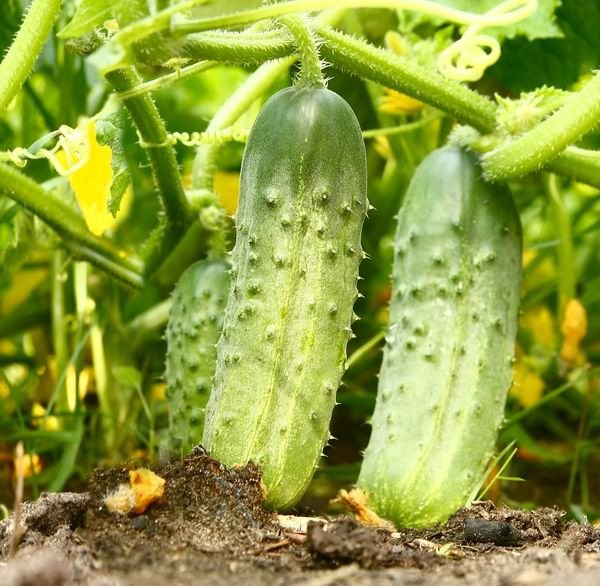
http://www.tomat-pomidor.com/newforum/index.php?topic=1971.135
April F1
An early ripe universal hybrid, the fruiting of which occurs 45-55 days after germination. It can be successfully grown not only in open ground, but also in small balcony boxes - the plant is compact and capable of self-regulation of branching. Cylindrical fruits are quite large: with a weight of 200-250 g in length, they reach 22-25 cm ... Undeniable advantages of the variety: no bitterness, undemanding care and relative cold resistance, which makes it possible to obtain good yields in open ground.
Erofei
Bee-pollinated mid-season universal (suitable both for fresh consumption and for canning) variety. A plant of mixed type of flowering, strongly branched and vigorous. Zelenets is short (about 6-7 cm), elongated-ovoid, slightly tuberculate. The variety is quite resistant to downy mildew.
Ant F1
Parthenocarpic ultra-early (35 - 39 days) hybrid. The plant is medium climbing, beam type of flowering with limited branching of lateral shoots. The fruits are large-tuberous, cylindrical, up to 12 cm long. The variety is resistant to olive blotch, as well as downy and powdery mildew.
Masha F1
Parthenocarpic ultra-early (35 - 39 days), high-yielding hybrid of the beam type of flowering with a long fruiting period. Fruits - large-tuberous gherkins of the correct cylindrical shape - are genetically devoid of bitterness, have the highest taste qualities and are suitable not only for fresh consumption, but also for canning. The variety is resistant to a complex of diseases: powdery and downy mildew, cucumber mosaic virus and others, as well as to unfavorable growing conditions.
Competitor
Productive, early (43-53 days) pickling variety with good taste. Fruits are elongated-oval or cylindrical, up to 12 cm long, completely covered with large tubercles, reaching a weight of 120 g. The variety is resistant to powdery mildew and bacterial spotting.
Fontanelle F1
Mid-season (from 48 to 55 days) bee-pollinated hybrid, resistant to a complex of diseases. Cylindrical fruits, covered with small tubercles with rare thorns, are devoid of bitterness; used for pickling and canning. The length of ripe greens reaches 12 cm, and the mass does not exceed 100 grams.
As the practice of our gardeners has shown, such varieties of cucumbers as Far Eastern And Phoenix, read more about the experience of growing which you can here in this post.
The best varieties of cucumbers for shady areas
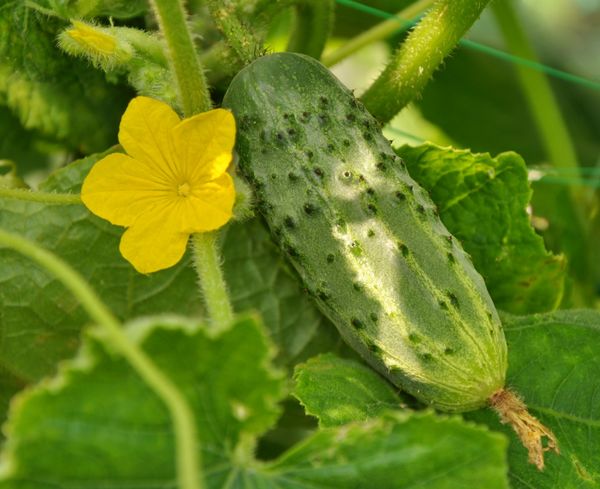
Muromsky 36
Early ripening (35-45 days) pickling variety, small-tuberous or smooth fruits of which reach 6-8 cm in length. Relatively resistant to short-term temperature drops. The fruits are light green, have an ovoid or ellipsoid shape, and reach a length of 6-10 cm. The peculiarity of the variety is that its fruits turn yellow rather quickly, so they need to be collected often.
Secret of F1
Parthenocarpic early ripe (38-42 days) hybrid of universal purpose. The plant is medium-branched, with a female type of flowering. Zelenets is cylindrical, slightly ribbed, medium in size, weighing up to 115 g. The variety is resistant to powdery mildew, cladosporiosis.
Moscow evenings F1
Parthenocarpic mid-season (42-45 days) hybrid, the fruits of which have excellent taste and are suitable for both pickling and fresh consumption. The plant is predominantly with a female type of flowering, strongly climbing. The fruit is cylindrical, tuberculate, dark green in color with white pubescence. Its length reaches 14 cm, and its weight does not exceed 110 grams. The variety is resistant to cucumber mosaic virus, powdery mildew, cladosporiosis.
The best varieties of cucumbers for balconies and home gardens
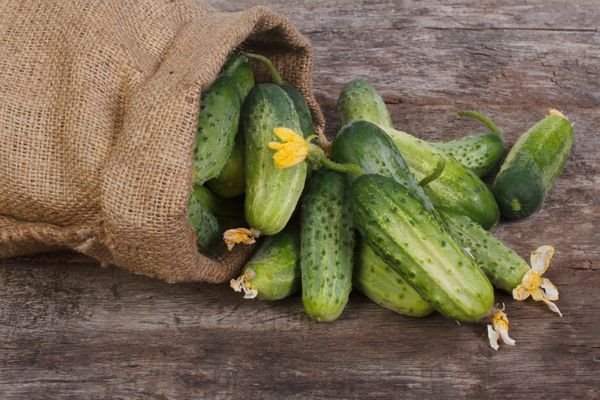
Machaon F1
The following varieties of cucumbers are also great for growing on the balcony and in the home garden: Balcony F1, Hummingbird F1, Moscow greenhouse, Biryusa, Nezhinsky local And Elegant.
The list of cucumber varieties and hybrids for the middle lane could go on and on - it is likely that I did not mention the varieties loved by many gardeners. Therefore, I ask you to supplement me - please tell us in the comments to the article about your favorite varieties, why do you prefer them?
Read more on the website 7dach.ru: Cucumbers: 15 best varieties for the middle lane
15 BEST CUCUMBER VARIETIES FOR THE MIDDLE BAND
It would seem that there is nothing complicated in growing cucumbers. And this is true, but only if you approach the matter with a certain amount of knowledge. Including about the varieties that are best suited for growing in your area.
How to generally navigate the abundance of cucumber varieties and choose the right ones is described in detail and consistently in the article Choosing Cucumber Varieties. Let me briefly recap the main points.
First of all, you need to answer yourself 3 questions:
● Where do you intend to grow cucumbers: in a greenhouse, greenhouse, open field, or even on a windowsill?
● When do you want to harvest: early June, July or August?
● How long do you want to harvest cucumbers?
So, early varieties of cucumbers are more susceptible to disease, and their fruiting period, in comparison with later ones, is much shorter. And, despite the fact that the division of cucumbers into early, medium and late is somewhat arbitrary, it is from the answers to these 3 questions, for obvious reasons, that the choice of variety will depend.
Only properly selected varieties are not so afraid of the diseases that most often affect cucumbers in the middle zone: true powdery mildew, downy mildew and bacteriosis, so when choosing a variety, you should pay special attention to their resistance to these diseases.
Another question: what exactly do you need cucumbers for - eating fresh or pickling? Their varieties according to their purpose are conditionally divided into 3 groups: pickling, salad, universal. Naturally, each of the varieties has its own advantages, but everyone should choose the best one for himself, depending on his needs and desires. For example, I always plant half of pickling varieties, and 25% of salad and universal varieties each.
THE BEST VARIETIES OF CUCUMBERS FOR GREENHOUSES AND GREENHOUSES
Goosebump F1
An early (from 42 to 45 days after sowing) parthenocarpic (that is, self-fertile, not requiring pollination) high-yielding hybrid produced by the Gavrish agricultural company (our review tells more about this and other seed producers). Plant of bunch type of blossoming, srednerosly; growth of lateral shoots is limited. The fruits are large-tuberous with small black spikes, reaching up to 8-12 cm long; they are genetically devoid of bitterness. The variety is distinguished by high taste qualities, versatility: it is good both fresh and for pickling. Very resistant to powdery mildew and downy mildew; suitable for growing in greenhouses, greenhouses, as well as in open ground.
Thumb boy
Early maturing (bearing fruit already on the 39th day) variety with a female type of flowering, characterized by resistance to a complex of diseases. Zelentsy, growing in length no more than 11 cm with a mass of 50 - 65 g, lovers of gherkins will appreciate it. The fruits are excellent for canning and pickling.
Benefit F1
Early maturing (from 43-50 days from germination to fruiting) self-pollinating hybrid of the female type of flowering. Zelenets weighing up to 100-120 grams and 10-12 cm long is densely covered with small tubercles. The fruits are devoid of bitterness and are distinguished by high palatability, universal (salting, pickling, fresh consumption). The hybrid is very resistant to powdery mildew, downy mildew and root rot.
Alekseich F1
Early ripe (from germination to fruiting 37-43 days) parthenocarpic hybrid of the female type of flowering. The plant is medium-sized, the variety is universal, the fruits are slightly tuberous, weighing 60-80 g and 7-8 cm long, Zelentsy have high taste qualities. The hybrid is extremely resistant to powdery mildew as well as downy mildew.
Emelya F1
A universal early ripe parthenocarpic hybrid, the fruits of which are successfully used both fresh and for pickling. It grows and develops better in heated greenhouses. The fruits ripen quickly - in 40-45 days. The bush of the variety is indeterminate (has unlimited growth of lashes), with a predominantly female type of flowering and a bunch of ovaries.
THE BEST VARIETIES OF CUCUMBERS FOR OPEN GROUND
April F1
An early ripe universal hybrid, the fruiting of which occurs 45-55 days after germination. It can be successfully grown not only in open ground, but also in small balcony boxes - the plant is compact and capable of self-regulation of branching. Cylindrical fruits are quite large: with a weight of 200-250 g in length, they reach 22-25 cm ... Undeniable advantages of the variety: no bitterness, undemanding care and relative cold resistance, which makes it possible to obtain good yields in open ground.
Erofei
Bee-pollinated mid-season universal (suitable both for fresh consumption and for canning) variety. A plant of mixed type of flowering, strongly branched and vigorous. Zelenets is short (about 6-7 cm), elongated-ovoid, slightly tuberculate. The variety is quite resistant to downy mildew.
Ant F1
Parthenocarpic ultra-early (35 - 39 days) hybrid. The plant is medium climbing, beam type of flowering with limited branching of lateral shoots. The fruits are large-tuberous, cylindrical, up to 12 cm long. The variety is resistant to olive blotch, as well as downy and powdery mildew.
Masha F1
Parthenocarpic ultra-early (35 - 39 days), high-yielding hybrid of the beam type of flowering with a long fruiting period. Fruits - large-tuberous gherkins of the correct cylindrical shape - are genetically devoid of bitterness, have the highest taste qualities and are suitable not only for fresh consumption, but also for canning. The variety is resistant to a complex of diseases: powdery and downy mildew, cucumber mosaic virus and others, as well as to unfavorable growing conditions.
Competitor
Productive, early (43-53 days) pickling variety with good taste. Fruits are elongated-oval or cylindrical, up to 12 cm long, completely covered with large tubercles, reaching a weight of 120 g. The variety is resistant to powdery mildew and bacterial spotting.
Fontanelle F1
Mid-season (from 48 to 55 days) bee-pollinated hybrid, resistant to a complex of diseases. Cylindrical fruits, covered with small tubercles with rare thorns, are devoid of bitterness; used for pickling and canning. The length of ripe greens reaches 12 cm, and the mass does not exceed 100 grams.
As the practice of our gardeners has shown, such varieties of cucumbers as the Far East and Phoenix have proven themselves to be excellent for growing in open ground.
BEST CUCUMBER VARIETIES FOR SHADY AREAS
Agree, the summer cottage is far from being equally illuminated by the sun from all sides, to which many garden crops are very demanding, and its area is not infinite. Tomatoes, peppers, eggplants - they all grow well only in open sunny areas, and sometimes there is simply no room left for planting cucumbers. But not everything is so hopeless, and if there is no longer an open sunny place on your site, it does not matter - feel free to plant cucumbers in partial shade, because there are varieties that grow well in such conditions.
Muromsky 36
Early ripening (35-45 days) pickling variety, small-tuberous or smooth fruits of which reach 6-8 cm in length. Relatively resistant to short-term temperature drops. The fruits are light green, have an ovoid or ellipsoid shape, and reach a length of 6-10 cm. The peculiarity of the variety is that its fruits turn yellow rather quickly, so they need to be collected often.
Secret of F1
Parthenocarpic early ripe (38-42 days) hybrid of universal purpose. The plant is medium-branched, with a female type of flowering. Zelenets is cylindrical, slightly ribbed, medium in size, weighing up to 115 g. The variety is resistant to powdery mildew, cladosporiosis.
Moscow evenings F1
Parthenocarpic mid-season (42-45 days) hybrid, the fruits of which have excellent taste and are suitable for both pickling and fresh consumption. The plant is predominantly with a female type of flowering, strongly climbing. The fruit is cylindrical, tuberculate, dark green in color with white pubescence. Its length reaches 14 cm, and its weight does not exceed 110 grams. The variety is resistant to cucumber mosaic virus, powdery mildew, cladosporiosis.
THE BEST VARIETIES OF CUCUMBERS FOR BALCONIES AND HOME GARDEN
If you don’t have the opportunity to grow cucumbers in the garden, you can arrange a cucumber “bed” on the balcony, loggia and just on the window, the main thing is to choose the right variety.
Early maturing parthenocarpic gherkin hybrid with a predominantly female type of flowering. Zelentsy spindle-shaped, small (up to 11 cm long), weighing 60-110 g, are distinguished by high taste and pickling qualities. The variety is resistant to cucumber mosaic, olive blotch, powdery mildew.
The following varieties of cucumbers are also excellent for growing on the balcony and in the home garden: Balcony F1, Hummingbird F1, Moscow greenhouse, Biryusa, Nezhinsky local and Graceful.
The list of cucumber varieties and hybrids for the middle lane could go on and on - it is likely that I did not mention the varieties loved by many gardeners. Therefore, I ask you to supplement me - please tell us in the comments to the article about your favorite varieties, why do you prefer them?
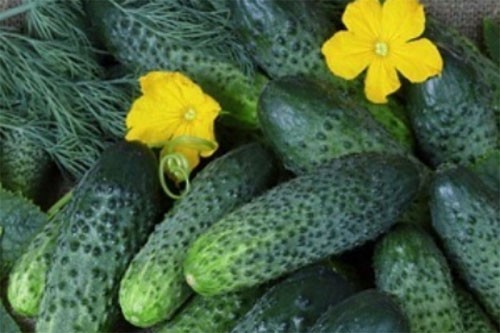 The best varieties of cucumbers for the middle lane
- meet and look for seeds on the shelves! We are getting ready for the new season now. Like any business, growing cucumbers requires certain knowledge and skills, but there is nothing complicated in this exciting activity. First you need to decide on the purpose of your lesson, and for this, answer yourself simple questions: where to plant, why, and when we get the result. These three questions will open the book of knowledge: all about the best varieties of cucumbers.
The best varieties of cucumbers for the middle lane
- meet and look for seeds on the shelves! We are getting ready for the new season now. Like any business, growing cucumbers requires certain knowledge and skills, but there is nothing complicated in this exciting activity. First you need to decide on the purpose of your lesson, and for this, answer yourself simple questions: where to plant, why, and when we get the result. These three questions will open the book of knowledge: all about the best varieties of cucumbers.
We select the best varieties of cucumbers for our purposes and under our conditions
According to the place of cultivation, all cucumber varieties are divided into:
- greenhouse;
- for open ground;
- for growing at home.
And by answering your second question, you narrow down the search for seeds for a specific purpose: salad, pickling, universal. We also need to decide how quickly we want to enjoy the result of our work? After all, without exception, varieties are further divided according to the timing of fruiting:
- early;
- average ripening period;
- later.
And now on the road for a choice of seed varieties, taking into account your growing preferences and, of course, the greatest popularity among lovers of this wonderful and healthy vegetable.
What varieties of cucumbers are most in demand
How to choose and where to buy seeds, we have already written here. And now let's look at those of the bottom that are loved by the gardeners of the middle lane and are in the highest demand.
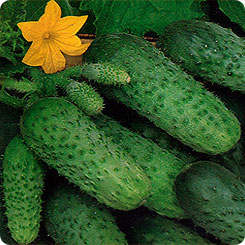
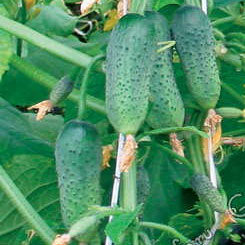
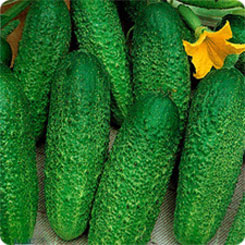
How can you imagine any feast without traditional pickled cucumbers?
This early maturing and self-pollinating (female flowering type), devoid of bitterness hybrid will satisfy the most demanding hostess and delight her guests. Great for cutting into a salad, but especially great for pickling for the winter.
It is attractive in appearance, the name is the correct shape, tuberculate structure with spikes, in mass can reach up to 110 grams. At the genetic level, the variety has resistance to powdery mildew, it can be grown both in greenhouses and in open ground.
Refers to very early varieties of cucumbers, 36-39 days from planting to harvest.
Favorably differs in high yield and the ability to grow even on the windowsill. The advantages include resistance to frost and disease.
The hybrid is self-pollinating. You can collect excellent gherkins, great for home canning.
Like many hybrid forms, it has a number of advantageous characteristics: self-pollinating, not susceptible to diseases, has no bitterness, early ripening.
Fruiting begins a maximum of 50 days after planting. The fruits have small tubercles, grow up to 120 grams in weight. The variety is universal, suitable for salting, pickling and of course fresh consumption.
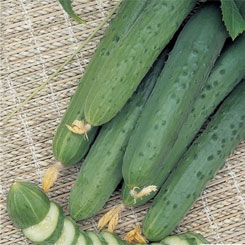
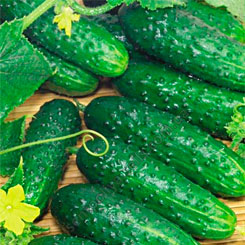
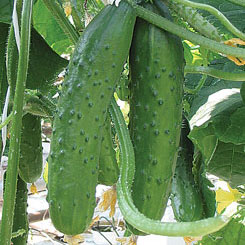
The variety is early, according to the female type of flowering. The cucumber itself has a very appetizing appearance and is perfect for fresh cutting and pickling in the form of gherkins up to 5 cm. It has no bitterness and is perfectly saved from powdery mildew. Abundant harvest, greens up to 8 centimeters, its indisputable advantages.
Hybrid for preferential cultivation in greenhouses, hotbeds.
Refers to early ripe and productive varieties. The fruits are juicy green in color and covered with small tubercles. It reaches a length of 15 centimeters, has excellent taste, is undoubtedly suitable for canning and salting.
At the genetic level, it is protected from powdery mildew, root rot and other diseases that affect the plant.
Due to its compactness and the ability of the plant itself to regulate branching, the variety is a success when choosing it for planting not only in open ground, but also in boxes on the balcony. Early maturing, devoid of bitterness. Having rather impressive forms (up to 250 grams of fruit weight and up to 25 centimeters in length), the variety is completely unpretentious when grown and does not tolerate frost well. Allows you to get a good harvest.
Ant F1
The variety is excellent for cultivation in greenhouses, greenhouses. It does not require bee pollination. An early maturing variety, limited in branching, has excellent taste. Its fruits have a large-tuberous appearance, oval shape, rich green color and small size. Suitable for any kind of canning, as well as for fresh consumption. The plant is characterized by resistance to the manifestation of diseases.
Masha F1
An early ripe hybrid that will delight you with the first cucumbers in 39 days. The variety is distinguished by an unusual yield, the inflorescences are arranged according to the bush type, the fruiting period is quite long. In application, the universal hybrid is good both in canning and fresh. Having gone through a series of genetic transformations, the variety is very resistant to cucumber misfortunes: cucumber mosaic, powdery and downy mildew. The variety is well adapted to frost.
Each experienced gardener, based on experience, forms his own piggy bank from his favorite varieties of cucumbers. And someone, on the contrary, prefers to experiment and tries new things. Everyone has their own way and choice of the way of cultivating this beautiful vegetable crop. You can read about the compact cultivation of cucumbers in barrels here.
From choosing a planting site and growing conditions, pests and diseases characteristic of the region, to the timing of harvesting and processing the crop, the work is very exciting, bringing a lot of pleasure from feeling your own victories. And of no small importance is the correct choice of cucumber varieties.
Cucumber is one of the most beloved garden plants. Grown for many centuries. Therefore, in the gardens there is a great variety of different varieties, different harvest times. Cucumbers are also divided into salad cucumbers, they are used only for preparing salads and other dishes without heating, and canning cucumbers - they are marinated, fermented for long-term storage, and salads are prepared in jars. A large number of liquids and potassium in cucumber fruits have a good effect on the organs and tissues of the human body. And pickled cucumbers are needed for the stable functioning of the digestive system in the winter.
Early varieties of cucumbers: description of varieties
Those varieties of cucumber that can give the first harvest after 40 - 65 days from full germination are called early.
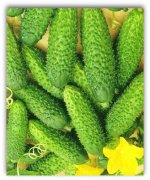 German F1- a hybrid of cucumber, early ripening, which can grow both in open ground and in greenhouses. The first fruits are formed 45 days after sowing. The plant is powerful, needs shaping and garter. Forms several ovaries on one node. Fruits are large-thorned, dark green, universal use. Disease resistant. German F1- a hybrid of cucumber, early ripening, which can grow both in open ground and in greenhouses. The first fruits are formed 45 days after sowing. The plant is powerful, needs shaping and garter. Forms several ovaries on one node. Fruits are large-thorned, dark green, universal use. Disease resistant.
|
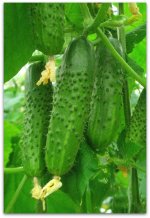 Courage F1- a powerful early-ripening hybrid. It bears fruit well in greenhouses, where it needs shaping. Parthenocarpic with many female flowers in the southern regions of the country can also be grown in the beds. The fruits are medium, ripening on the 43rd day after the appearance of the first leaf. The arrangement of the ovaries is bouquet. The use is universal. Disease resistant. Courage F1- a powerful early-ripening hybrid. It bears fruit well in greenhouses, where it needs shaping. Parthenocarpic with many female flowers in the southern regions of the country can also be grown in the beds. The fruits are medium, ripening on the 43rd day after the appearance of the first leaf. The arrangement of the ovaries is bouquet. The use is universal. Disease resistant.
|
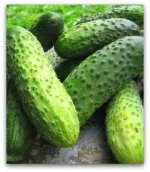 Masha F1- powerful ultra-early cucumber hybrid, predominantly female type of flowering. Ovary tufted, medium size. It bears fruit well in greenhouses of various types. In the southern regions it works well in the beds. The taste of the fruit is excellent, universal use. Disease resistance is high. The harvest is big. Masha F1- powerful ultra-early cucumber hybrid, predominantly female type of flowering. Ovary tufted, medium size. It bears fruit well in greenhouses of various types. In the southern regions it works well in the beds. The taste of the fruit is excellent, universal use. Disease resistance is high. The harvest is big.
|
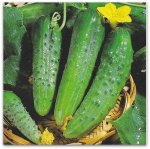 Zozulya F1- fruiting begins a month after planting seedlings. Hybrid bee-pollinated, many female flowers on the plant, has partial parthenocarpy. There is self-regulating branching and limited lateral branching, excluding pinching and pinching. Zelentsy 14–24 cm long are cylindrical, slightly tuberculate, spikes are white, weighing 160–290 g. Productivity is high and stable. Use only for salads. Zozulya F1- fruiting begins a month after planting seedlings. Hybrid bee-pollinated, many female flowers on the plant, has partial parthenocarpy. There is self-regulating branching and limited lateral branching, excluding pinching and pinching. Zelentsy 14–24 cm long are cylindrical, slightly tuberculate, spikes are white, weighing 160–290 g. Productivity is high and stable. Use only for salads.
|
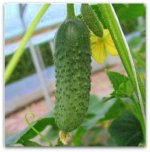 Meringue F1- gives a high, early and friendly harvest. Good for both glass greenhouses and open ground. When grown in greenhouses, it is not damaged by root rot. High uniformity of fruits, the correct form. The fruits are used in pickling and eaten raw. Responsive to feeding. Can be grown with drip irrigation. Disease resistant. Meringue F1- gives a high, early and friendly harvest. Good for both glass greenhouses and open ground. When grown in greenhouses, it is not damaged by root rot. High uniformity of fruits, the correct form. The fruits are used in pickling and eaten raw. Responsive to feeding. Can be grown with drip irrigation. Disease resistant.
|
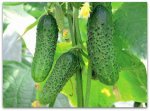 Fontanelle F1- a vigorous growing plant. The fruits are medium leveled, tasty, slightly tuberous, medium weight, crispy, tasty, without bitterness, suitable for processing. In salting and conservation, they do not form voids and do not change color. The fruits also tolerate shipping in crates well. It gives a greater yield in film greenhouses or when grown "in raised" on drip irrigation. Disease resistant. Fontanelle F1- a vigorous growing plant. The fruits are medium leveled, tasty, slightly tuberous, medium weight, crispy, tasty, without bitterness, suitable for processing. In salting and conservation, they do not form voids and do not change color. The fruits also tolerate shipping in crates well. It gives a greater yield in film greenhouses or when grown "in raised" on drip irrigation. Disease resistant.
|
Mid-season varieties of cucumbers: description of varieties
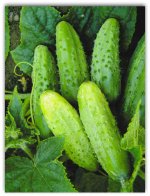 Zyatek F1- the hybrid is pollinated by bees. The first cucumbers will be two months after sowing the seeds. The fruits are green, 5–7 cm long, conical in shape, black-thorned. The cucumbers of this hybrid are good in any form; during conservation, they remain elastic and crispy. Less susceptible to disease. The yield is high, with top dressing and watering stable. Zyatek F1- the hybrid is pollinated by bees. The first cucumbers will be two months after sowing the seeds. The fruits are green, 5–7 cm long, conical in shape, black-thorned. The cucumbers of this hybrid are good in any form; during conservation, they remain elastic and crispy. Less susceptible to disease. The yield is high, with top dressing and watering stable.
|
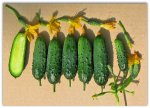 Mother-in-law F1- this hybrid grows and develops equally well both in greenhouse conditions and in an open field. Resistant to damage and disease. The ovary is dark green, medium tuberculate, with white spikes, up to 7-8 cm long, the shape is beautiful. It is good to eat them not only fresh, but also marinated. The taste of cucumbers is good, there is no bitterness. The harvest is stable. Mother-in-law F1- this hybrid grows and develops equally well both in greenhouse conditions and in an open field. Resistant to damage and disease. The ovary is dark green, medium tuberculate, with white spikes, up to 7-8 cm long, the shape is beautiful. It is good to eat them not only fresh, but also marinated. The taste of cucumbers is good, there is no bitterness. The harvest is stable.
|
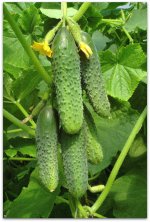 Vyaznikovsky 38 This is a bee pollinated variety. Possessing great plasticity. The plant has short lashes and few side shoots. Harvest good, stable. It can be grown on fallow beds and under agrofiber gives a higher yield. Maturing terms of 40-57 days from shoots. The ovary is small tuberculate, light green, medium in size, ovoid, length 7–9 cm, weight about 130 g. Very tasty both in a salad and in a jar. Resistant to various diseases and low temperatures in early spring. Vyaznikovsky 38 This is a bee pollinated variety. Possessing great plasticity. The plant has short lashes and few side shoots. Harvest good, stable. It can be grown on fallow beds and under agrofiber gives a higher yield. Maturing terms of 40-57 days from shoots. The ovary is small tuberculate, light green, medium in size, ovoid, length 7–9 cm, weight about 130 g. Very tasty both in a salad and in a jar. Resistant to various diseases and low temperatures in early spring.
|
| Competitor- the variety has increased resistance to adverse living conditions. He has strong growth. Grown in fields and gardens. The first cucumbers can be harvested 50 days after the appearance of the first leaf. Fruits are large-tuberous, black-thorned, weighing up to 130 grams of medium length. The fruits are suitable for both pickling and slicing fresh salad. |
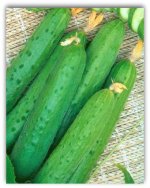 April F1- hybrid parthenocarpic, with many ovaries. At the beginning, fruiting gives more than half of the crop. In the presence of bees and undersowing cucumber varieties in greenhouses, the yield increases significantly. Recommended for winter and spring greenhouses. Harvest should be in a day. The hybrid is suitable for growing in indoor culture and on balconies. After 45 - 50 days from sowing, you can get the first harvest. The fruit is cylindrical, large-tuberous, dark green, up to 25 cm and weighing up to 250 g. It does not turn yellow when overgrown. The taste is good. Disease resistant. Can also be used in conservation. The hybrid has cold resistance, which allows you to get an early harvest in bad weather conditions. April F1- hybrid parthenocarpic, with many ovaries. At the beginning, fruiting gives more than half of the crop. In the presence of bees and undersowing cucumber varieties in greenhouses, the yield increases significantly. Recommended for winter and spring greenhouses. Harvest should be in a day. The hybrid is suitable for growing in indoor culture and on balconies. After 45 - 50 days from sowing, you can get the first harvest. The fruit is cylindrical, large-tuberous, dark green, up to 25 cm and weighing up to 250 g. It does not turn yellow when overgrown. The taste is good. Disease resistant. Can also be used in conservation. The hybrid has cold resistance, which allows you to get an early harvest in bad weather conditions.
|
| Claudia F1- an early ripe hybrid, with a large number of ovaries. High yielding. Zelenets large-tuberous, cylindrical, up to 13 cm long, weighing up to 90 g. The taste is excellent, without bitterness. Universal use. Resistant to overgrowing and occasional picking. Disease resistance is great. |
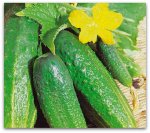 Libella F1- It has early dates maturation. Suitable for film tunnels and open ground. Ripens on 47-53 days from sowing seeds in the ground. The elongated ellipsoid green has small tubercles with white pubescence, dark green, up to 14 cm long, weighing up to 150 g. The taste of cucumbers is excellent, while preserving elasticity. Resistant to LMR and olive blotch. The hybrid has the potential for a long period of fruiting. Libella F1- It has early dates maturation. Suitable for film tunnels and open ground. Ripens on 47-53 days from sowing seeds in the ground. The elongated ellipsoid green has small tubercles with white pubescence, dark green, up to 14 cm long, weighing up to 150 g. The taste of cucumbers is excellent, while preserving elasticity. Resistant to LMR and olive blotch. The hybrid has the potential for a long period of fruiting.
|
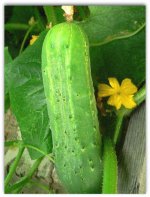 Nezhinsky- an old variety. The first cucumbers ripen after 53–67 days from sowing the seeds. The fruiting is extended, the harvest is small, the greens easily outgrow. The fruit is blue-green, medium, large-tuberous, black-thorned. Ideal for pickling and pickling. The plant is powerful, resistant to drought and many cucumber diseases. Grown either in greenhouses or outdoors. Nezhinsky- an old variety. The first cucumbers ripen after 53–67 days from sowing the seeds. The fruiting is extended, the harvest is small, the greens easily outgrow. The fruit is blue-green, medium, large-tuberous, black-thorned. Ideal for pickling and pickling. The plant is powerful, resistant to drought and many cucumber diseases. Grown either in greenhouses or outdoors.
|
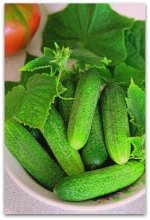 Connie F1- hybrid parthenocarpic, forms a crop in 50 days from sowing seeds. Zelenets, has an elongated cylindrical shape, the weight of which is up to 80 g, 7–8 cm in length, small-tuberous, white-thorned, bright green, without bitterness. The taste is good, suitable for salting and preservation. It grows well in greenhouses and in the garden. Disease resistant. Connie F1- hybrid parthenocarpic, forms a crop in 50 days from sowing seeds. Zelenets, has an elongated cylindrical shape, the weight of which is up to 80 g, 7–8 cm in length, small-tuberous, white-thorned, bright green, without bitterness. The taste is good, suitable for salting and preservation. It grows well in greenhouses and in the garden. Disease resistant.
|
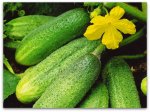 Elegant- a bee-pollinated variety with many barren flowers. The main shoot is of medium length. The yield is average. Grown in open ground and greenhouses. The first cucumbers ripen in 44 - 64 days. Zelenets of the correct elongated-ellipsoidal shape, small tubercles, up to 13 cm long, weighing up to 140 g. They can remain on the plant for a long time and not turn yellow. The taste is good. Looks attractive on the table and in the bank. Medium disease resistant. Tolerant of cold climates and can produce in cold and wet weather. It is an indispensable pollinator for many varieties and hybrids. Elegant- a bee-pollinated variety with many barren flowers. The main shoot is of medium length. The yield is average. Grown in open ground and greenhouses. The first cucumbers ripen in 44 - 64 days. Zelenets of the correct elongated-ellipsoidal shape, small tubercles, up to 13 cm long, weighing up to 140 g. They can remain on the plant for a long time and not turn yellow. The taste is good. Looks attractive on the table and in the bank. Medium disease resistant. Tolerant of cold climates and can produce in cold and wet weather. It is an indispensable pollinator for many varieties and hybrids.
|
Late varieties of cucumbers: description of varieties
Late varieties give a harvest later than all, and can bear fruit until frost. Their fruits have an elastic skin and are ideal for pickling and canning.
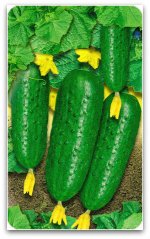 Phoenix- a variety for pollination that needs bees, with a large number of female flowers. The plant is strongly branched. The yield is good. For open ground and greenhouses. The first cucumbers ripen after 64 days from germination. Fruiting is long, until frost. Cucumber large-tuberous, crispy, up to 16 cm long, weighing about 220 grams, not bitter, good taste. The ovaries can remain green for a long time, they are used both for salads and for salting. It is disease resistant and resists LMR well. It tolerates heat normally, without reducing productivity. Long fruiting period. Phoenix- a variety for pollination that needs bees, with a large number of female flowers. The plant is strongly branched. The yield is good. For open ground and greenhouses. The first cucumbers ripen after 64 days from germination. Fruiting is long, until frost. Cucumber large-tuberous, crispy, up to 16 cm long, weighing about 220 grams, not bitter, good taste. The ovaries can remain green for a long time, they are used both for salads and for salting. It is disease resistant and resists LMR well. It tolerates heat normally, without reducing productivity. Long fruiting period.
|
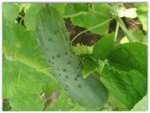 Winner- a variety of cucumber with long lashes. Zelenets cylindrical yellow-green with large tubercles. High pickling qualities. And long fruiting until frost. Good resistance to drought and fungal diseases. The yield is high and stable. Winner- a variety of cucumber with long lashes. Zelenets cylindrical yellow-green with large tubercles. High pickling qualities. And long fruiting until frost. Good resistance to drought and fungal diseases. The yield is high and stable.
|
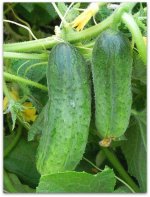 Solar- mid-season variety. It takes 47-50 days before fruiting. Pollinated by bees and bumblebees, good for large gardens. The plant has lashes of medium length, stepchildren and side branches are long. The number of flowers of both types is normal. The fruit is cylindrical, with light green stripes and moderate spotting. Large - and rarely tuberculate. Zelentsa weight up to 138 g, length 12 cm, resistant to disease. The ovary is well preserved. The harvest is high. Disease resistant. Solar- mid-season variety. It takes 47-50 days before fruiting. Pollinated by bees and bumblebees, good for large gardens. The plant has lashes of medium length, stepchildren and side branches are long. The number of flowers of both types is normal. The fruit is cylindrical, with light green stripes and moderate spotting. Large - and rarely tuberculate. Zelentsa weight up to 138 g, length 12 cm, resistant to disease. The ovary is well preserved. The harvest is high. Disease resistant.
|
The best varieties of cucumbers for open ground and greenhouses (closed ground)
The best varieties and outdoor hybrids will be those plants that can withstand extreme temperature fluctuations and cold weather early in the growing season. They can be either bee pollinated or parthenocarpic. Their growth should be powerful, have large leaves and many branches. Zelentsy should be resistant to overgrowing and not turn yellow. The plant must be resistant to diseases and have a long fruiting period. Such varieties and hybrids can be: Vyaznikovsky - 37, Bush, Competitor, Zozulya, Nezhinsky, Phoenix, Graceful.
For closed ground those cucumbers that have a compact bush, a bundle ovary are suitable. Preference should be given to parthenocarpics. Also, cucumbers should tie and pour many fruits at the same time. Their fruits are thin-skinned and resistant to long-term transportation.

